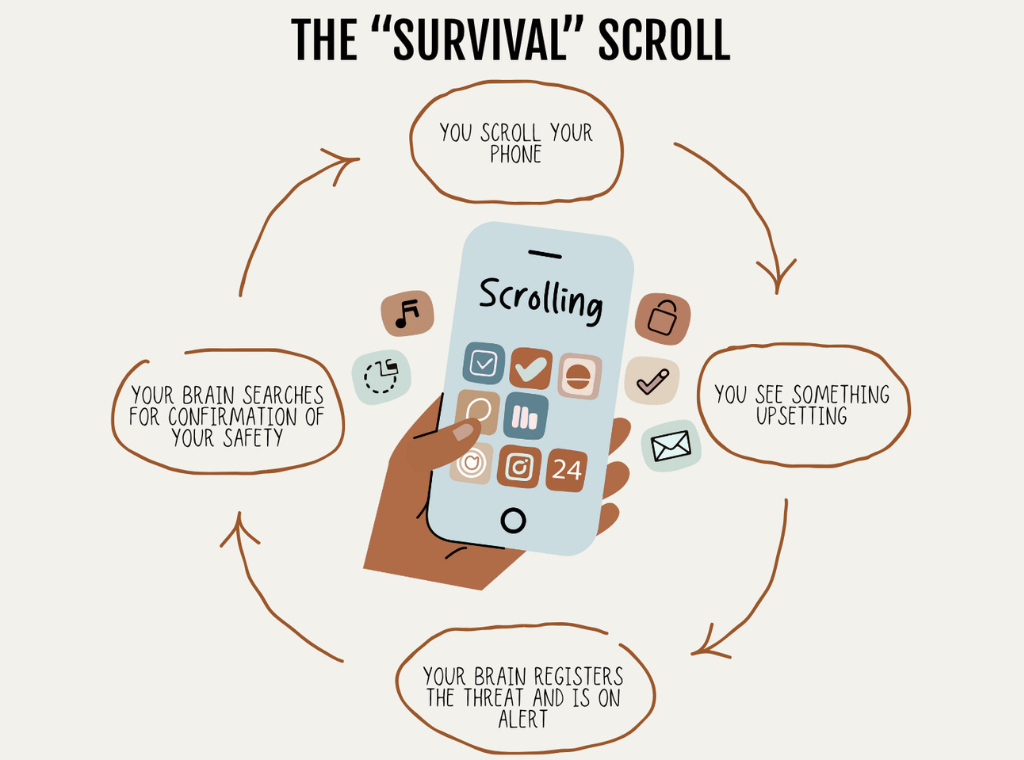Have you ever picked up your phone “just for a minute,” only to find yourself scrolling 45 minutes later — with no idea how time disappeared?
If this sounds familiar, you’re not alone.
In today’s hyper-connected world, our smartphones have become both our best friend and biggest distraction. What was once a tool for convenience has quietly turned into a source of endless noise. And the truth is — we don’t use our phones anymore; our phones use us.
It’s time to change that. Introducing The Smart Phone Rule — a mindful way to take back control, reduce digital overwhelm, and use your phone intentionally instead of impulsively.
Understanding the Trap: Why You Can’t Stop Scrolling
Before you can break free from phone addiction, it’s important to understand what you’re really up against. Your phone isn’t just a gadget — it’s a behavioral masterpiece designed to keep you hooked.
1. The Dopamine Loop
Every “like,” comment, or notification triggers a small hit of dopamine — the brain’s “feel-good” chemical. This creates a reward-seeking loop that keeps you coming back for more, much like a slot machine in your pocket.
2. The Infinite Scroll Design
Ever noticed there’s no “end” to your feed? That’s not an accident. Social media platforms use infinite scrolling to eliminate natural stopping points, keeping you glued longer than you intended.
3. The Power of Algorithms
Every scroll trains the system. Algorithms track your behavior to show you exactly what will keep you engaged — making it nearly impossible to stop once you start.
Step One: Make Your Phone Less Addictive
If you want to stop mindless scrolling, you have to remove the temptation. The good news? You don’t need to throw your phone away — just tweak how it looks and behaves.
1. Turn On Grayscale Mode
Colors grab attention; black and white calm it down. Switch your display to grayscale. It instantly makes apps look dull, reducing the urge to check them constantly.
2. Silence the Noise
Turn off unnecessary notifications. Every ping, vibration, or red dot is designed to hijack your attention. Keep alerts only for essentials — like calls or messages from family.
3. Create Friction
Make it harder to access time-wasting apps. Move them off your home screen or hide them in a folder. Better yet, delete them and use browser versions instead.
4. Curate What You See
Follow accounts that inspire, educate, or bring peace — not stress. Unfollow negativity. Your digital environment should nourish your mind, not drain it.
Step Two: Set Boundaries Between You and Your Phone
Your phone doesn’t need to be by your side 24/7. The secret to balance is setting limits that help you reconnect with the real world.
1. Create Phone-Free Zones
Keep your phone out of the bedroom. No late-night scrolling. No checking it first thing in the morning. You’ll sleep better and start your day more peacefully.
2. Charge Away from Bed
If your excuse is “I use it as an alarm,” get a real alarm clock. You’ll be surprised how much calmer your mornings feel.
3. Schedule Phone Time
Dedicate specific times during the day to check messages or social media. This keeps your usage intentional, not impulsive.
Step Three: Replace Scrolling with Real-Life Experiences
When you remove something addictive, you must fill the space with something meaningful. Otherwise, your mind will find its way back to the same habit.
1. Try High-Quality Leisure
Do activities that engage your mind — reading, sketching, gardening, or learning something new. These bring genuine joy without draining your attention.
2. Meet People in Real Life
Invite a friend for chai, dinner, or a walk. Keep your phones aside and enjoy the moment. Real connection always beats online likes.
3. Practice Mindfulness
Next time you’re waiting in line or sitting idle, resist the urge to check your phone. Take a deep breath. Notice your surroundings. Be present.
4. Start Journaling
Whenever you feel the itch to scroll, jot down your thoughts. Writing clears your mind and gives you clarity — something social media rarely does.
Step Four: Use Technology to Control Technology
Ironically, the same device that distracts you can also help you fight back — if used wisely.
1. Use Built-in Tools
Both Android and iPhones have tools like Screen Time or Digital Wellbeing. Track your daily usage, set time limits for apps, and schedule “downtime” to unplug.
2. Try App Blockers
Apps like Freedom, AppBlock, or StayFree can temporarily block distracting apps. They create digital boundaries so you can focus on what truly matters.
3. Track Your Progress
Celebrate your small wins — like reducing screen time by 30 minutes. Progress, no matter how small, motivates you to keep going.
A Real-Life Change Worth Making
When you start applying The Smart Phone Rule, something amazing happens. You don’t just reduce screen time — you gain time.
You notice details you’d usually miss, have deeper conversations, and even sleep better.
Your phone becomes a tool again — not your boss.
Takeaway from The Life TrackR
At The Life TrackR, we believe true balance begins when technology works for you, not against you. Start small — silence one app, take one phone-free evening, or leave your device outside your bedroom tonight.
Small steps lead to big freedom. And this one might just give you your life back — one mindful moment at a time.
#TheSmartPhoneRule #DigitalDetox #MindfulLiving #ScreenTimeControl #FocusBetter #TheLifeTrackR
Editor’s Note: This article was originally published here: https://thelifetrackr.com/the-smart-phone-rule-how-to-break-free-from-endless-scrolling-and-reclaim-your-focus/ by @Kairav and @krutika
